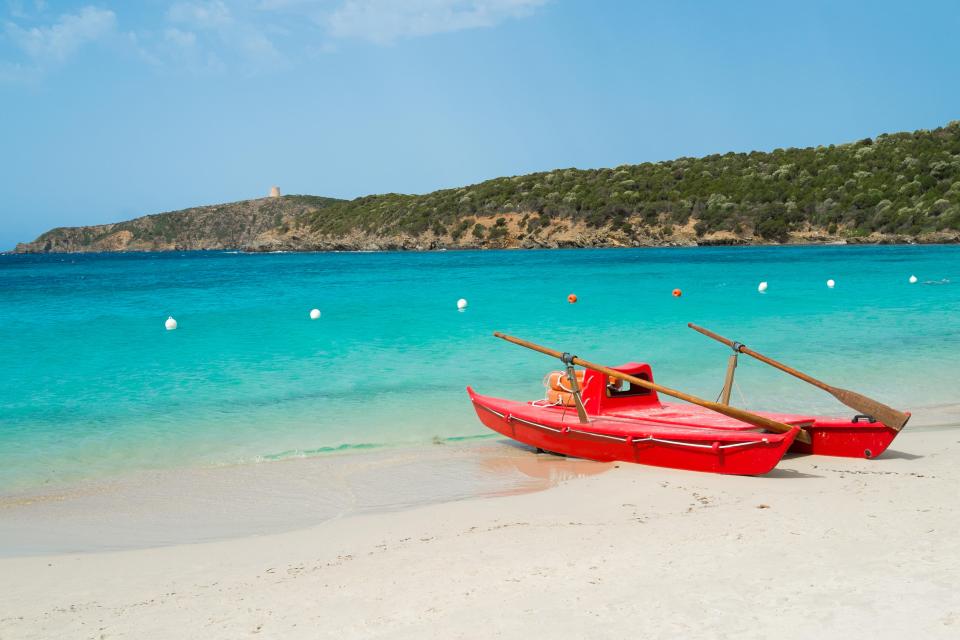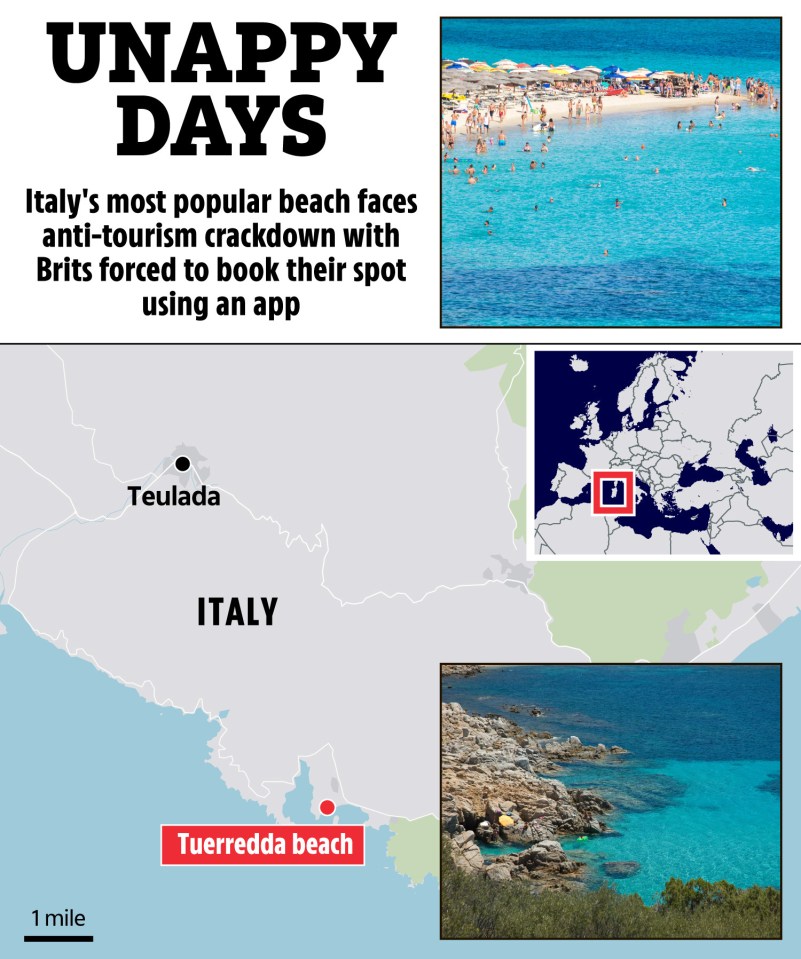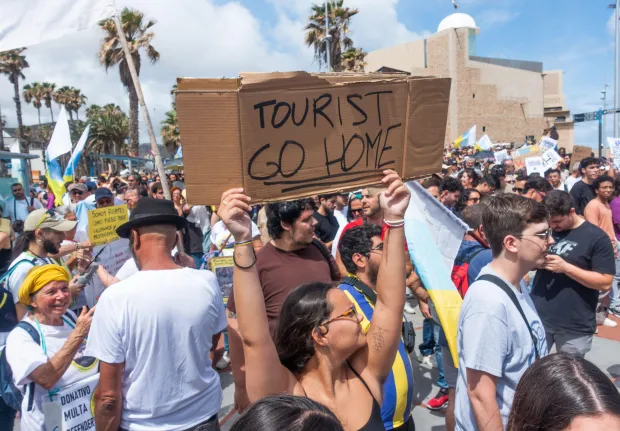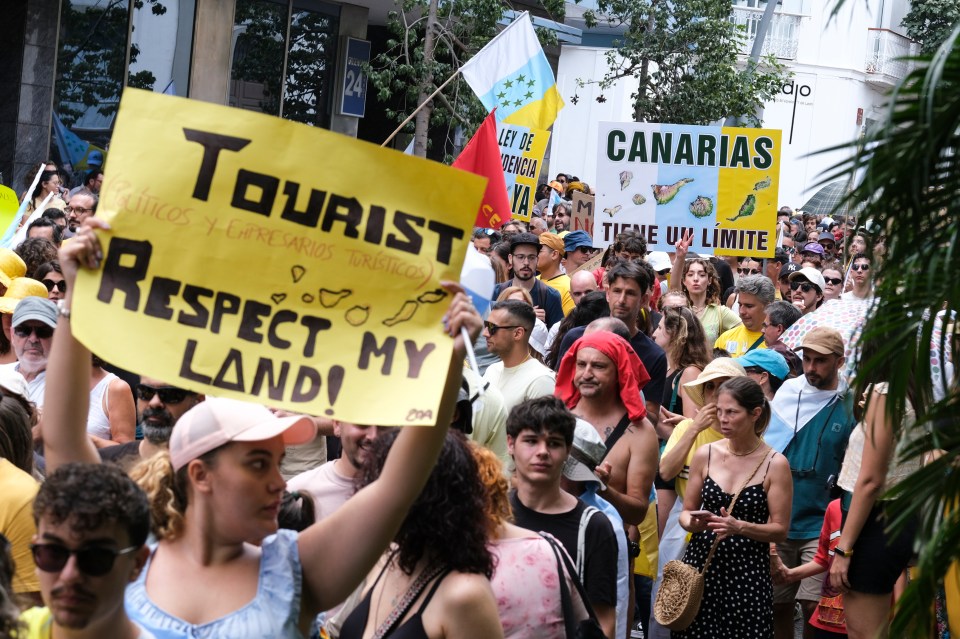BRITS will now be forced to book their spot at one of Europe's most popular beaches through a new tourist app.
A strict limit of up to 1,100 visitors has been put in place at a busy Italian beach, renowned for its fine golden sand, clear waters and crescent-shaped bay.
A local council in Sardinia has imposed a series of unusual bans at Tuerredda beach, one of the Italian island's most popular beaches.
Teulada council has banned disposable plastic bags, smoking and the removal of sand or pebbles from the beach since 2022.
Discussing the new app, Angelo Milia, the mayor of Teulada, told local media: “We hope to start with the new system as early as July.”
Around 65 million tourists visited Italy in 2024, making it one of the world's most visited countries.
Read more on anti-tourism
Frustrated by Italian Prime Minister Giorgia Meloni's hesitation to apply regulations curbing overtourism, local councils have taken matters into their own hands.
Last week, Teulada's mayor joined mayors from 25 Italian tourist towns, including Capri, Positano, Courmayeur, Cinque Terre and Taormina, at a crisis summit in Amalfi to tackle overtourism.
The Sicilian hilltop town of Taormina has been attracting a growing number of tourists after the successful TV series, White Lotus, filmed there.
The mayors of these tourist hotspots are demanding greater flexibility to restrict tourist access in periods of high demand.
Most read in News Travel
They also demand the ability to coordinate trains, ferries and other public transport, impose local taxes and order businesses to hire temporary staff.
Paolo Falco, the mayor of Capri, said: “It is essential that our municipality has a say in the hourly timetable of maritime connections, currently established only at the regional level.”
“On Capri, we want to protect to the fullest those who come to visit us and ensure a quality experience for all.”
Falco has suggested an hourly limit on the number of ferries.
Franco Cerrotta, the mayor of Anacapri, has also been keen to impose maritime restrictions.
To prevent yachts from overcrowding Capri’s famous Blue Grotto, he proposed a barrier of 40 buoys be placed 330 feet offshore around the western rim of the island.
The tiny island of Capri, just over four square miles, sees around 2.3 million tourists a year.
This amounts to as many as 16,000 tourists a day in peak season, when its local population stands at just 13,000 residents.
Venice's overtourism problem has received widespread media coverage.
Large cruise ships have been barred from entering Venice's historic centre since 2021 after damage to the lagoon led to the city almost being placed on UNESCO's endangered list.
Last year, authorities in Venice introduced an entry fee for day trippers on peak days between April and June in attempt to deter visitors.
Venice also banned tour groups of more than 25 people, as well as loudspeakers as officials claimed that they cause both "confusion and disturbances".
What is the anti-tourist movement?
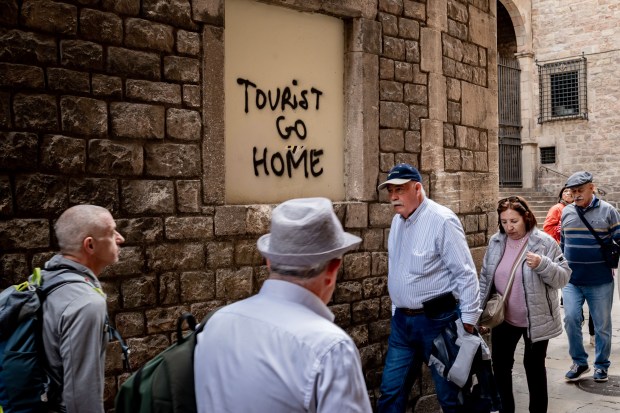
Since 2024, an anti-tourism movement has been gaining traction across Europe in countries like Spain, Italy, France and Greece.
In 2024, mass protests surged in Barcelona, Majorca, Rome and Paris, among other cities, some of which reportedly saw as many as 50,000 protesters.
Local residents across European cities argue that overtourism has caused these major issues:
- Increased cost of living
- Urban displacement
- Overcrowded attractions
- Damage to historical and heritage sites
- Deterioration of the natural environment
- Rise in "low-quality" tourism
As a result, local councils have implemented measures to curb overtourism.
But critics argue that the protests and their messages could be considered 'tourismphobia' - an 'aversion or rejection of tourism'.
Protests have grown more and more disruptive, often resulting in vandalism, with activists targeting buildings, holiday rentals and cruise ships.
This comes as thousands of anti-tourism protesters flooded the streets of Spain across 40 cities on Saturday as activists called for sabotage against holidaymakers.
Protesters were even urged by activists to superglue the locks of holiday rentals to render them unusable.
These were the first mass anti-tourist protests of the year, following on from a string of furious demonstrations last summer.
Read More on The Sun
The main issue addressed was soaring rents and a lack of affordable homes.
Brits have been a particular target of the protests in the past, as they are amongst the most loyal visitors to sunny spots like Majorca and Malaga.


